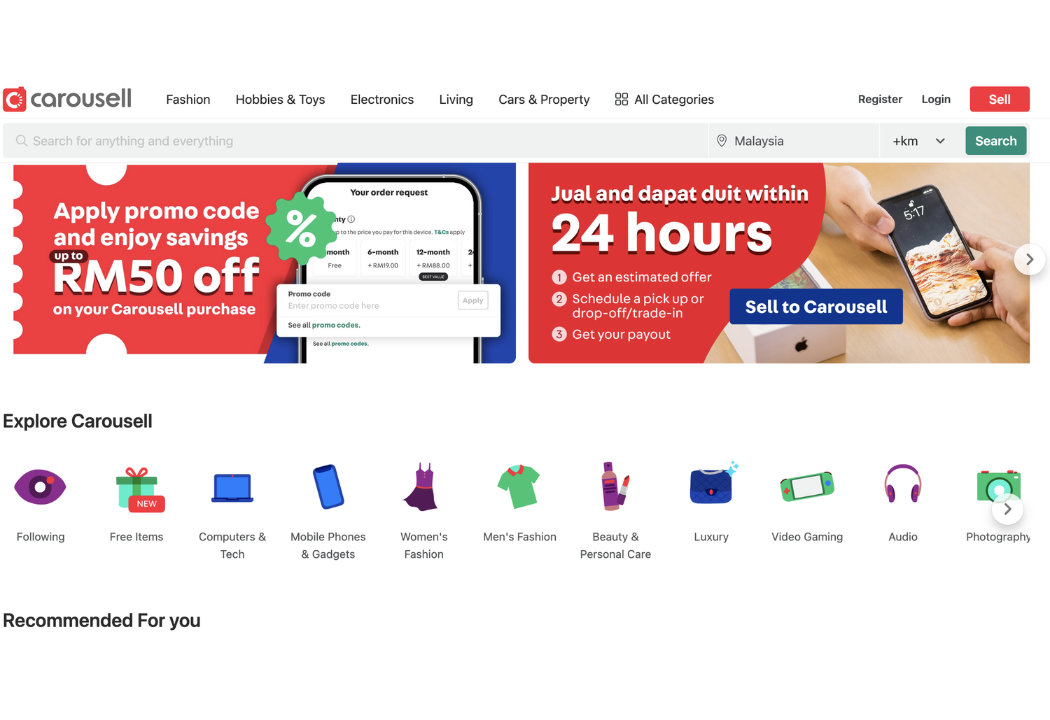
Author: JJ Eastwood, Carousell Media Group, Chair IAB SEA+India Regional Board | Sponsor IAB SEA+India Retail Media Council
The advertising landscape has witnessed two significant waves of transformation with the rise of search and social media. However, a new wave is emerging, promising to redefine how brands engage with consumers and drive digital advertising growth in the 2020s. This wave is known as retail media. In this blog post, we will explore the key drivers, market projections, trends, and the future of retail media.
The Growing Market of Retail Media
Retail media is poised to become a significant player in the advertising industry, with projections estimating it to be a market worth over $160 billion by 2027. As global e-commerce continues to surge, it is expected to account for 19% of retail sales in 2022, growing to 25% by 2027. The global retail media market is projected to reach $101 billion in 2022, showing a 15% year-on-year growth, and is predicted to grow by 60% over the next five years.
Key Drivers of Retail Media
Several factors contribute to the rise of retail media. Among the key drivers are first-party data, closed-loop attribution, contextually relevant ads, audiences at scale, and full-funnel campaigns. Leveraging first-party data allows retailers to gain valuable insights into consumer behaviour and preferences, enabling targeted and personalised advertising. Closed-loop attribution provides a clearer understanding of the impact of advertising efforts throughout the entire customer journey. Contextually relevant ads ensure that advertisements are displayed in a manner that resonates with consumers. Meanwhile, reaching audiences at scale and implementing full-funnel campaigns help optimise marketing strategies for maximum impact.
Retail Media at the Intersection of Major Trends
Retail media is situated at the intersection of three significant trends in the advertising industry. Firstly, traditional TV ratings are declining, allowing digital advertising to take centre stage. Secondly, the loss of digital identifiers, such as Identifier for Advertisers (IDFA) and soon-to-be phased-out cookies, push advertisers to seek alternative avenues like retail media to target consumers effectively. Lastly, digitising retail stores provides new opportunities for brands to engage with consumers during their shopping journeys.
Retail Media Trends in Asia
Retail media is not only gaining traction on a global scale but also demonstrating significant relevance in the Asian market. According to the IAB SEA+India and Carousell Media Group’s research on the Key Retail Media Trends in Asia, a substantial number of respondents have already incorporated retail media into their media plans, with 62% affirming its presence. However, it is noteworthy that only 56% of respondents currently allocate less than 5% of their budgets to retail media, indicating a potential for increased investment.
The research further highlights the positive outlook for retail media in Asia, with a staggering 99% of respondents planning to invest more in this advertising channel. An intriguing finding from the study is that 44% of respondents are willing to invest in a retail media network even if they don’t have a product listed on the retailer or marketplace’s site.
Additionally, the research reveals that a significant portion of retail media budgets in Asia are derived from Shopper/Trading marketing, with 73% of respondents reporting this source. This is a stark contrast to the US, where marketers have indicated that most retail media budgets are coming from traditional ad spends.
Retail Media Networks and Classifications
Retail media networks can be classified into three categories. Digital marketplaces like Carousell, Amazon, and Lazada provide advertising opportunities within their platforms. Mass merchant retailers such as FairPrice and Walmart also offer retail media services. Additionally, commerce intermediaries and delivery providers like Uber, Grab, and Foodpanda have entered the retail media landscape, leveraging their platforms to connect brands with consumers.
Driving Growth: Sponsored Search Ads and Amazon’s Influence
Sponsored search ads account for a significant portion, over 80%, of revenue generated by retail media networks. Amazon, in particular, has experienced remarkable growth, increasing its share of search ad spend from 13% in 2019 to 21% in 2022. The success of sponsored search ads demonstrates their effectiveness in reaching and influencing consumers within the retail media ecosystem.
The Future of Retail Media
Looking ahead, brands can expect exciting possibilities by collaborating with retail media networks to build comprehensive customer profiles. By harnessing innovative data collaborations, brands can gain a 360-degree view of their customers, enabling them to deliver personalised experiences and targeted advertising campaigns. Furthermore, retail media is expanding beyond its traditional boundaries and moving up the funnel into areas like OTT/CTV video and digital out-of-home advertising, offering brands new avenues for engaging with consumers.
Summary
Retail media has emerged as a game-changer in the advertising industry, offering brands unparalleled opportunities to connect with consumers in a targeted and personalised manner. By embracing the power of retail media, brands can navigate the evolving digital landscape, establish meaningful connections with their audience, and drive business growth in the dynamic and competitive market.

